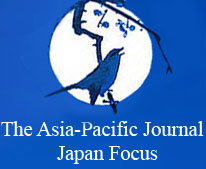Smits, Gregory. 2011. “Danger in the Lowground: Historical Context for the March 11, 2011 Tōhoku Earthquake and Tsunami.” The Asia-Pacific Journal 9 (20), May 16. http://www.japanfocus.org/-Gregory-Smits/3531
In the days and weeks following the disaster on March 11, 2011, the Japanese popular press revisited the tsunami history of the Sanriku coast, going back as far as the 869 Jōgan tsunami. As perhaps expected, the news media invoked this history in discussions of risk and blame, particularly in light of the Fukushima disaster.1
Gregory Smits, who has studied the cultural history of earthquakes for several years, tackles the issue of historical memory and risk in this article published in The Asia Pacific Journal. By considering the histories of tsunamis that occurred primarily in the Edo (1600-1868) and modern periods, Smits comes to a rather disheartening conclusion: despite some apparently successful cases of institutional memory, the perception of risk seems to fade quickly, within even a generation. For example, the “tsunami stones,” reported in the New York Times,2 may have provided a warning to some, but apparently had been a less remarkable feature of the landscape to others, before the disaster granted them new relevance.
Smits cites the work of Hirakawa Arata of Tōhoku University, who claims that the Tokugawa highway post-stations were all (re-)located beyond the reach of a devastating 1611 tsunami, and argues that the post-Meiji population had lost its sense of tsunami risk. Having investigated people’s reactions to tsunami risk after an area had been devastated, Smits argues that population turnover may be the greatest impediment to successful prevention efforts based on historical memory. In examples raised by Smits, Tohoku in the modern period and Osaka in the Edo Period, the lack of a stable population is given as the main explanation for the impermanence of useful historical memory and effective countermeasures. Long periodicity and the ease of population movement lead to concern for the possibility of a similar disaster in Tokyo and the Pacific Northwest region of the United States, although Smits expresses the hope that the Tōhoku experience might spur preparations.
Intact historical memory has also failed to provide warning in some cases, according to Smits. One such case was a tsunami that hit the Sanriku coast on August 23, 1856. Smits cites a record that blames a folk belief for the high death toll of that disaster. Apparently derived from tsunamis in 1611 and 1793, this was the belief that tsunamis only occur in winter. Likewise, in the case of a tsunami that hit Osaka on December 24, 1854, Smits thinks that the recent memory of the more geographically distant Iga-Ueno Earthquake of July 9, 1854, overrode the memory of the more temporally distant Hōei Earthquake and tsunami of 1707. As a result, hundreds of Osaka residents were led to their deaths when they fled to boats in the immediate aftermath of the shaking in order to ride out aftershocks. These cases lead to the distressing conclusion that even if historical memory were preserved through time and the turnover of generations, it might not be enough to improve safety and survivability when the next disaster strikes.
— Kristina Buhrman
1. Lyn, Tan Ee. 2011. “Japan’s tsunami history ignored: report; Previous study also downplayed; Size of past waves were not considered when Fukushima nuclear plant was built,” The Gazette (Montreal), April 14.
2. Fackler, Martin. 2011. “Tsunami Warnings for the Ages, Carved in Stone,” The New York Times, April 20.
![[Teach311 + COVID-19] Collective](https://blogs.ntu.edu.sg/teach311/files/2020/04/Banner.jpg)

Pingback: 논문: 저지대에서의 위험: 2011년 3월 11일 토호쿠 지진과 쓰나미의 역사적 맥락 (2011) | Teach 3.11